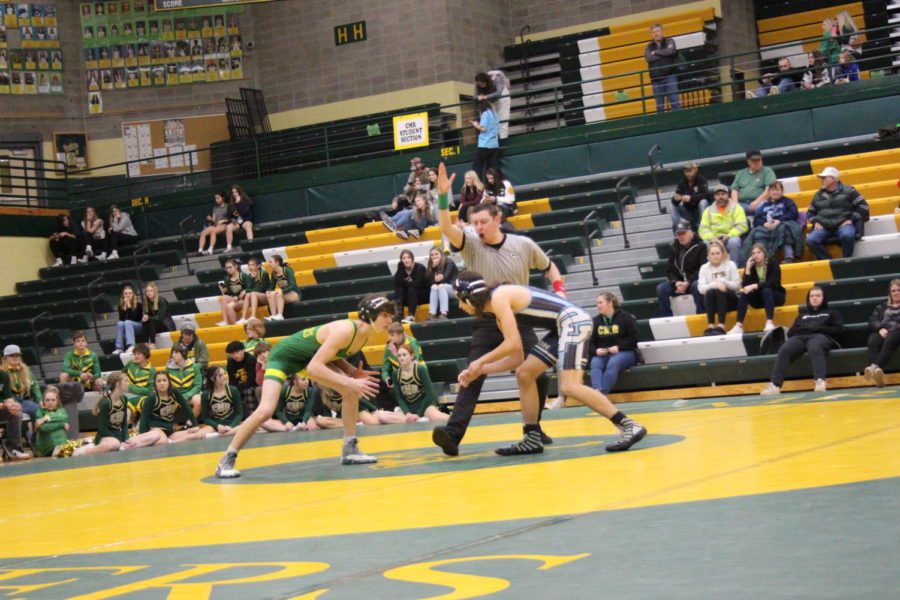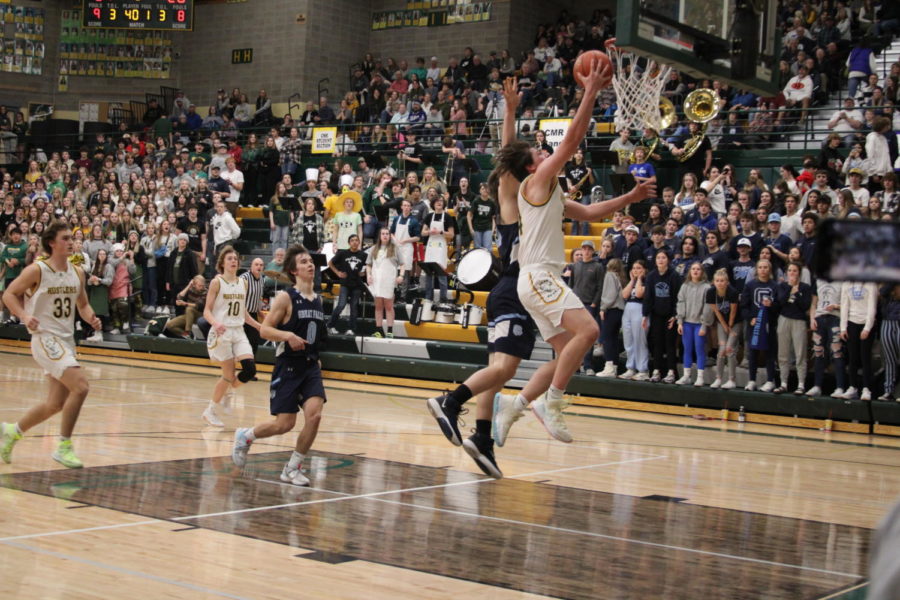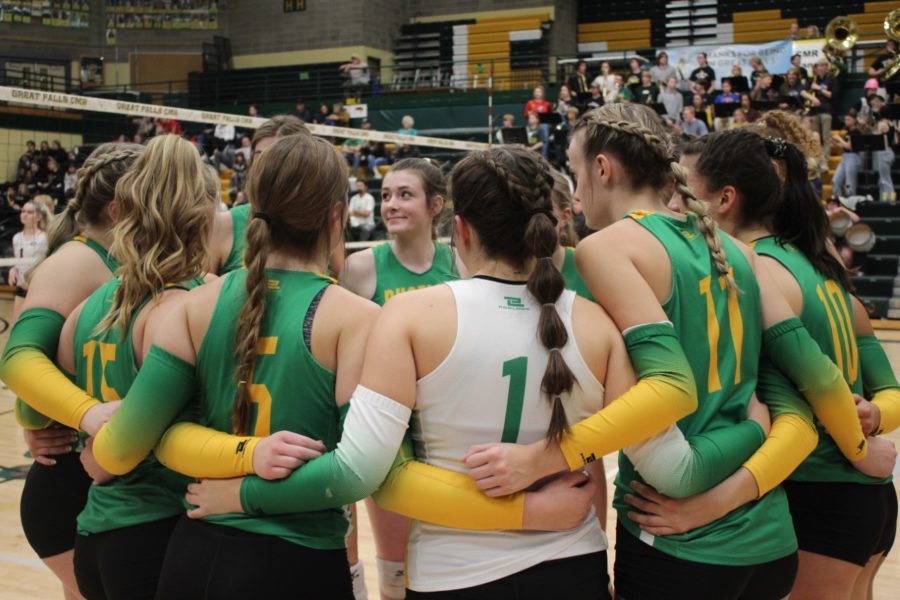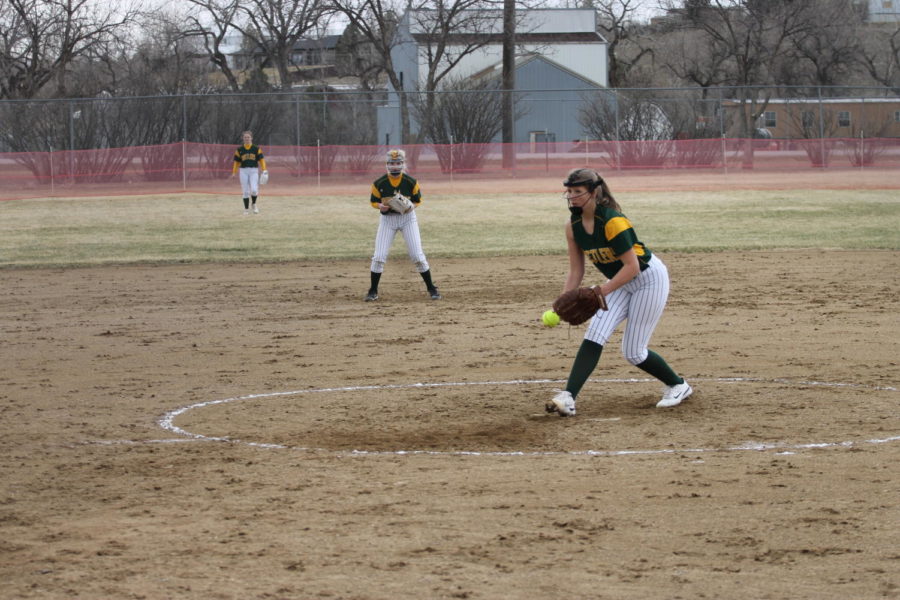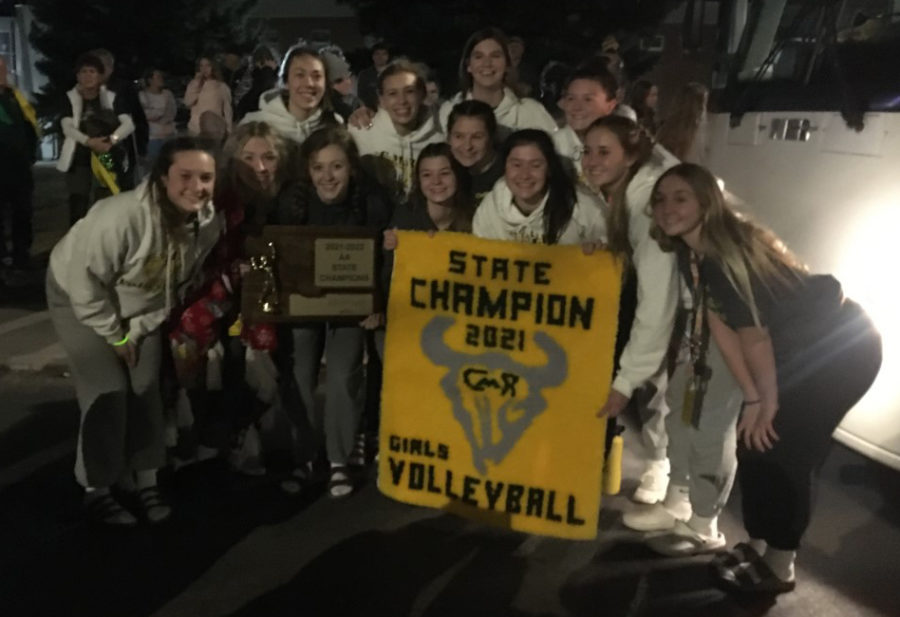It was the moment that every athlete fears.
It was the third game of the season, and senior Russ Morin was in Helena, playing against Capital. He had caught the ball and was trying to run over an opponent when a player from the other team attempted to tackle him.
The player’s helmet collided with Morin’s collar bone, with both players going at full speed.
Morin’s collarbone snapped in half.
“I didn’t really know what happened,” Morin said. “But I knew something was wrong.”
Morin sat out on the bench and initially told the trainer that he was fine. However, he soon realized that this was not the case, and the athletic trainer began taking off his shoulder pads.
Morin and the trainer could instantly tell that something was wrong. The collarbone was clearly broken and pushed against the skin. The trainer put him in a sling and hurried him to the emergency room.
The next Monday, Morin met with a surgeon, and decided to have surgery to repair his collarbone. Morin had an hour-long surgery where one plate and 10 screws were used to screw his collarbone back together.
Morin then began a long recovery similar to the recovery that countless high school athletes must face. As student athletes push their bodies to the breaking points, injury is sometimes inevitable, and many athletes have to balance a healthy recovery while retaining strength for future competition.
Morin had never had surgery before, and he found the experience draining.
“It’s not fun,” Morin said. “It took a lot out of me.”
The first three days after the surgery were the hardest.
“I was physically drained,” Morin said. “I never thought I’d be back 100 percent.”
After the surgery, Morin faced an eight-week recovery, which he described as “really hard.”
“I wanted to keep playing,” he said.
Morin had full motion in his shoulder after the surgery, but the area was sore. Morin said that it was hard to move around, and he had to limit himself to lifting no more than 10 pounds for eight weeks.
“I did the recovery as well as I could.”
The eight-week recovery process happened to take place in the middle of football season, meaning that Morin couldn’t finish out his senior year on the gridiron.
Coach Jack Johnson allowed him to remain captain, and he attended every practice and game. Morin missed the conditioning that football provided, however, making it more difficult to return to top form in time for basketball season.
Morin was cleared for full contact competition just in time for basketball tryouts, and he had been able to shoot hoops for a few weeks before that.
“I was able to shoot and get my rhythm back,” Morin said. “It recovered pretty quickly.”
Because Morin had missed eight weeks of conditioning, one of his final challenges was recovering his strength. To do so, he focused mostly on lifting weights and jogging. He said that he was back to 100 percent two or three weeks after he was cleared for competition and he hasn’t experienced any further trouble with his collarbone.
Morin’s plan for recovery was perfect, according to athletic trainer Teayre Klosterman.
Klosterman said that preventative measures such as taping, concussion testing, and warm-ups are important, and that once an athlete has been injured, they can’t jump back in.
If an athlete has been injured on the field, Klosterman is there to make an initial assessment.
“Immediately it’s an assessment of the injury to make sure they’re safe,” Klosterman said. Depending on the degree of the injury, Klosterman will either take the athlete to the emergency room or treat them on the scene.
After that, “it’s a slow condition back in,” she said. That slow condition involves a lot of cardiovascular exercise.
“It’s not jump right back into it,” Klosterman said. “You need to progress back.”
One of Klosterman’s most important tips to injured athletes? “Ice the injury,” Klosterman said. Ice can reduce swelling, and it’s important not to apply heat until a doctor has told you to do so.
Recovering from an injury is even harder when the athlete doesn’t know what’s going on, something senior Wrangler Georgia Mae Morrison knows all too well.
Morrison was warming up for a performance at state basketball her sophomore year and the team was practicing on a concrete floor. She fell and dislocated her knee cap. At the time, her knee cap was popped back into place, and she assumed it was fine.
However, Morrison soon realized that this was not the case.
“It was sore all the time,” Morrison said, adding that she was often limping and couldn’t do anything.
Morrison later found out that the cartilage in her knee had been fraying since sophomore year, and she recently underwent surgery to fix her knee. The surgeons put two holes on the side of her knee, sewed some of the cartilage, and shaved off the rest that they couldn’t sew.
“It’s going pretty well,” Morrison said.
The doctors explained to Morrison a “3-day, 3-week, 3-month rule.” Following that rule, the first three days after the surgery, Morrison felt horrible. After the three-week mark, she was able to return to light activity, and after the three-month mark she will be back to be doing all of her activities as normal.
The injury was difficult for Morrison because it impacted her participation in drill team. She couldn’t perform at state because of when she had her surgery.
“I missed pretty much my whole senior year,” Morrison said.
Thankfully, Morrison’s knee is on the mend. Before the surgery, Morrison said that the pain “felt like nothing ever had before.”
Her knee still hurts, but Morrison said that the pain is different.
“It hurts now, but I can tell it’s from the surgery,” she said.”I’m trying to be really careful about not doing anything too fast. It’s weaker now.”
Morrison hopes to return to dancing once her knee is healed.
“I’ll work really hard and really carefully to make sure I gain my strength back.”

